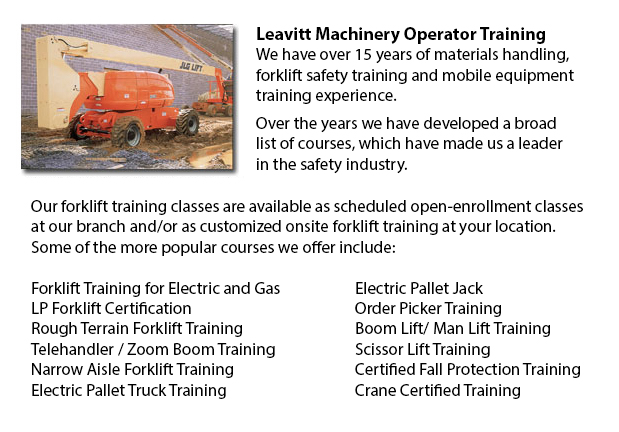
Oshawa Boom Lift Safey Training - Boom lifts fall under the category of aerial lifting device or elevated work platform. Most commonly utilized in warehousing, construction and industry; the boom lift is very versatile that it can be utilized in almost whatever environment.
The elevated work platform is utilized in order to enable access to heights that were otherwise inaccessible using other means. There are dangers inherent when utilizing a boom lift device. Workers who operate them should be trained in the correct operating procedures. Avoiding accidents is vital.
The safety aspects that are included in using boom lifts are covered in our Boom Lift Training Programs. The course is best for individuals who operate self-propelled elevated work platforms and self-propelled boom supported elevated work platforms. Upon successfully finishing the course, Those who participated will be given a certificate by a person who is certified to verify finishing a hands-on evaluation.
Industry agencies, federal and local regulators, and lift manufacturers all play a role in providing information and establishing standards in order to help train operators in the safe utilization of elevated work platforms. The most essential ways to avoid accidents related to the utilization of elevated work platforms are the following: conducting site assessments; checking machines; and putting on safety gear.
Key safety considerations when operating Boom lifts:
Operators should observe the minimum safe approach distance (or also called MSAD) from power lines. Voltage can arc across the air to be able to find an easy path to ground.
A telescopic boom must be retracted prior to lowering a work platform so as to maintain stability as the platform nears the ground.
People working from the platform of a Boom lift should tie off to be able to ensure their safety. Safety harness and lanyard combinations must not be attached to any anchorage other than that provided by the manufacturer, never to other wires or poles. Tying off may or may not be necessary in scissor lifts, that depends on particular employer guidelines, job risks or local rules.
The maximum slope will be specified by the manufacturer. Workers must avoid working on a slope, if possible. When the slope exceeds recommended conditions, the lifting device must be transported or winched over the slope. A grade can be simply measured by laying a minimum 3-feet long straight edge or board on the slope. Afterward a carpenter's level could be laid on the straight edge and raising the end until it is level. The percent slope is obtained by measuring the distance to the ground (also called the rise) and then dividing the rise by the length of the straight edge. After that multiply by 100.
-
Oshawa Scissor Lift Operator Certification
Oshawa Scissor Lift Operator Certification - North American regulators recommend that worksites need operators of scissor lifts, booms or aerial work platforms to obtain certification training. Scissor lift operator certification is not mandatory, bu... More -
Narrow Aisle Forklift / Order Picker Training / Electric Pallet Jack / Electric Pallet Truck Training in Oshawa
A pallet lift is a model of equipment dedicated in the moving of pallets of many dimensions and weights. They might be utilized as an appendage for platform lifts, cranes and other types of heavy machinery or be applied on their own. Pallet hoists ar... More -
Oshawa Crane Operator Certification
Oshawa Crane Operator Certification - The process to permit people to be able to operate certain kinds of cranes is to take crane operator certification training to get certification. The certification process incorporates classroom learning, hands-o... More -
Oshawa Aerial Platform Training
Oshawa Aerial Platform Training - Aerial platform lifts might be utilized to accomplish a lot of unique tasks executed in hard to reach aerial places. A few of the odd jobs associated with this style of lift include performing routine repair on build... More -
Oshawa Forklift Certification Schools
Oshawa Forklift Certification Schools - Forklift Certification is mandatory within North America. Hence, forklift training programs are important both for companies and for people seeking jobs in industries as forklift operators. Forklift training fo... More -
Oshawa Heavy Equipment Ticket
Oshawa Heavy Equipment Ticket - Depending on the nature of the job at hand, the type of construction equipment that a heavy equipment operator makes use of varies. Each and every type of machine is built to perform specific jobs in the most effective... More -
Oshawa Heavy Equipment Certification
Oshawa Heavy Equipment Certification - Large pieces of machines and heavy-duty vehicles are usually known as heavy equipment. This broad term includes utility vehicles from forestry and agricultural implements to civil engineering vehicles, construct... More -
Oshawa Overhead Crane Safety Training
Oshawa Overhead Crane Safety Training - The overhead crane safety training program is meant to equip the operators with the right skills and knowledge in the areas of: crane safety precautions, accident avoidance, materials handling, and equipment an... More

Forklift Certification Oshawa
TOLL FREE: 1-888-254-6157
Oshawa, Ontario
forkliftcertificationoshawa.com
Email Us
About Us


